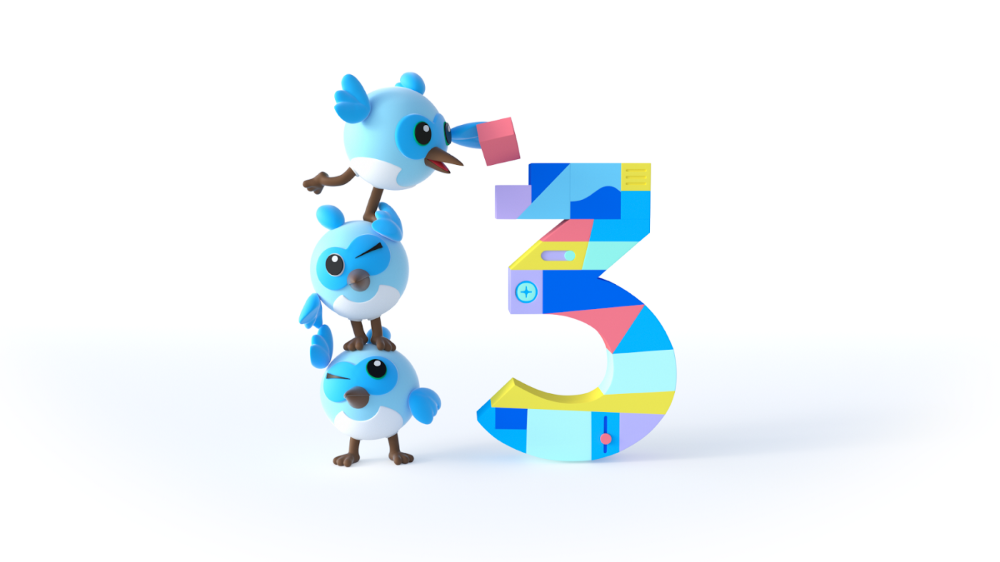
Google's Flutter, a front-end framework is an open-source toolkit that may be used to create dynamic and adaptable applications. Because of its well-known interoperability with both the iOS and Android operating systems, it is a preferred option for developers. Dart is another object-oriented programming language created by Google that is frequently used with Flutter.
Flutter is unique in that it uses a single codebase to create applications for multiple platforms, including Linux, Windows, macOS, Android, iOS, and even Fuchsia web browser.
Flutter was first released in 2015, but it wasn't until the end of 2018 that it was formally released as Flutter 1.0. With this release, the programming language Dart was introduced. Later on, Flutter has experienced improvements. It has become very popular all across the world. Indeed, a poll of developers revealed that 35% of them use Flutter for startups, and 26% use it for corporate software.
1.SDK, or software development kit: The kit comes with the libraries and resources needed to create a Flutter application. Widgets, renderer, command-line tools, and the object-oriented programming language Dart are all included. SDK prioritizes user interfaces.
2.Framework: This outlines your application's architecture and organization, including the user interface. Pre-build widgets, state management, and routing are critical components of the Flutter framework. All in all, it's a framework with a well-organized set of widgets that may be altered to meet certain needs.
The icing on the cake is that Google keeps funding Flutter, guaranteeing its sustainability over time.
Developers can construct powerful applications with Flutter since it is unique and valuable, and they are always introducing new upgrades. Because it is a framework focused on the future, it gives the business owner confidence and credibility. As per Statista, Flutter surpassed React Native to emerge as the top cross-platform mobile app development framework in 2022.
When compared to other cross-platform technologies and native platforms, Flutter offers several advantages. This is a list of Flutter's many advantages that can successfully and efficiently improve business.
1. ExcellentWork:
Flutter offers great efficiency and a simplified user experience that improves an application's overall productivity, functionality, and stability because of its single codebase and native app-like performance. It aims to deliver performance of 60 or 120 frames per second (fps), indicating improved mobile responsiveness.
For improved efficiency and UI rendering, Flutter further converts the code into native ARM machine code. Moreover, a rich ecosystem and pre-designed widgets provide responsiveness and fluid animations.
2. Adaptable User Interface:
Flutter is the framework of choice when it comes to providing fluid user interfaces for all kinds of applications. The framework offers top-notch, adaptable UI widgets that facilitate the creation of user interfaces that are both visually beautiful and intuitive.
Pre-built widgets for the iOS and Android platforms are included, such as text fields, switches, and buttons.
The main benefit of customisation is that it allows you to alter the appearance and feel of the app's user interface in real time. Additionally, Flutter's configurable UI makes it simpler to change the screen size, performance, and user experience regardless of complexity.
3. Support for Cross-Platforms:
The cross-platform compatibility of Flutter is one of the most important considerations. Because Flutter is written in the Dart programming language, you can use the same code to write apps for both iOS and Android. Because of this, you can operate for several devices without having to make even little code changes.
Additionally, the developer obtains control over altering and deciding on the appearance, feel, and functionality of the program with a single codebase and customizable widget. In the meantime, it raises the likelihood of combinability with regard to the performance of the application.
4. A Better Rendering Engine:
With Flutter, attractive animations and captivating images can be produced without the need for platform-specific user interface elements thanks to the render engine Skia. Flutter guarantees that any application, regardless of its complexity or size, is aesthetically pleasing and operates efficiently while consuming the fewest resources possible. Because of this, you may create imaginative and captivating visuals for the iOS and Android platforms, utilizing pixels for Android and vivid colors for iOS.
Furthermore, you may use iOS's human interface in addition to Android's material design. Flutter also makes it possible to add eye-catching displays and high-resolution graphics to applications, improving user interfaces and user experience.
5. The Hot Reload feature:
The ability of Flutter's hot reload mechanism to alter code instantly has won it a devoted following. Developers may inspect real-time code changes without having to restart the entire program, which enables them to make speedy changes and reduces the likelihood of errors.
One of the most useful Flutter tools for troubleshooting UI issues in the development stage is the hot reload. Furthermore, the average hot reload time in Flutter is less than 8 seconds, demonstrating the effectiveness and speed of the framework process.
6. Rich in Features Widgets:
Flutter offers a vast array of widgets that improve apps with superior functionality. In addition, these widgets include drag-and-drop toggling capabilities and are customisable. They also come with animations, push notifications, chats, and a light/dark mode Flutter style.
Additionally, using the feature-rich widgets in Flutter makes it simpler to manage massive volumes of data and modify backend specifications. You may create a scalable application and incorporate the newest features with the aid of widgets-based architecture.
7. Adaptive and Future-Proof:
Because Flutter has helped the application progress, there has been a sharp rise in demand for it. A well-known, scalable, and adaptable front-end framework is called Flutter. Furthermore, it has excellent compatibility with various cutting-edge front-end or back-end technologies.
It's more likely that in the future, there will be a greater need for Flutter while creating online and mobile applications. Flutter's wide range of capabilities means that it is not limited to the displays of today. Because of its adaptable architecture, it is ideal for new technologies such as wearables, web and desktop applications, and foldable phones.
8. Obtaining Native Features:
Not every company can afford cutting-edge mobile apps and progressive web applications. If Flutter performance optimization is done correctly, Flutter is their answer to achieving native app-like performance. The best part is that creating a solid software is scalable, easy, and cost-free.
Machine code was used in the development of the Flutter apps, which removed serious flaws and performance problems. Therefore, native functionalities are advantageous in Flutter applications. Flutter generates native apps that are lightning fast and feel as smooth as butter for both iOS and Android by compiling directly to machine code. Performance or user experience will no longer be compromised.
Conclusion:
So is Flutter the best framework for creating apps? Are Flutter's advantages essential to your company? Yes, without a doubt! Flutter gives your app development endeavors new life. It is a game-changer for contemporary application development and offers organizations and applications a plethora of advantages. It is a cross-platform powerhouse that embodies the maxim "Write once, conquer all platforms together," to put it simply.
Long-term benefits of integrating Flutter into your applications include its ease of usage and compatibility with other frameworks and cutting-edge technology. If, on the other hand, you are having trouble creating new apps or making your current ones work better, you can work with the app development business to improve them.

Founder & CEO